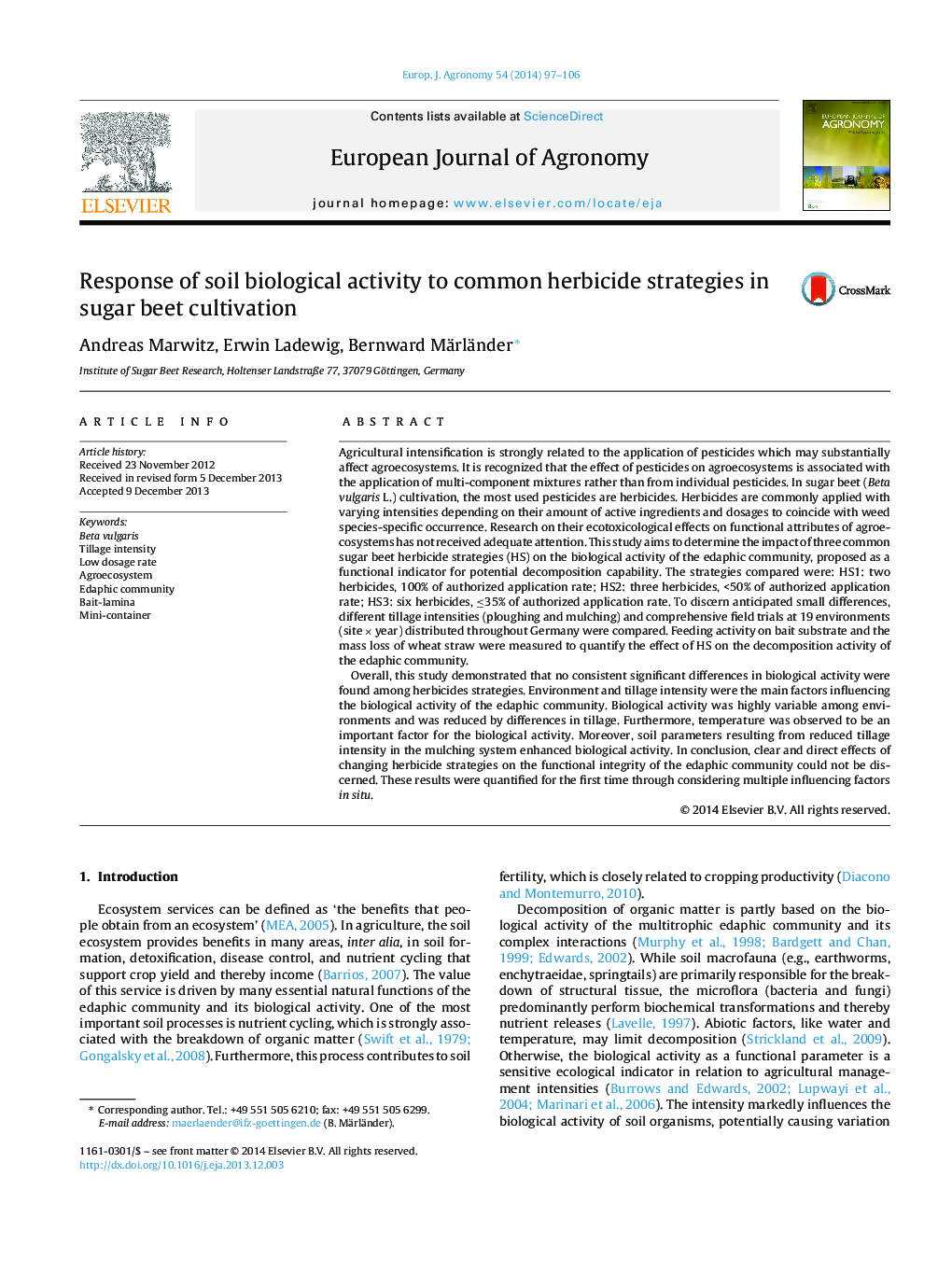| کد مقاله | کد نشریه | سال انتشار | مقاله انگلیسی | نسخه تمام متن |
|---|---|---|---|---|
| 4508981 | 1624471 | 2014 | 10 صفحه PDF | دانلود رایگان |
• Investigation of soil biological activity in situ by bait lamina and mini-container.
• Determination of herbicide effect by site, year and tillage intensity.
• Representativeness for sugar beet cultivation in Central Europe.
• Impact on biological activity by environment > tillage system ≫ herbicide strategy.
Agricultural intensification is strongly related to the application of pesticides which may substantially affect agroecosystems. It is recognized that the effect of pesticides on agroecosystems is associated with the application of multi-component mixtures rather than from individual pesticides. In sugar beet (Beta vulgaris L.) cultivation, the most used pesticides are herbicides. Herbicides are commonly applied with varying intensities depending on their amount of active ingredients and dosages to coincide with weed species-specific occurrence. Research on their ecotoxicological effects on functional attributes of agroecosystems has not received adequate attention. This study aims to determine the impact of three common sugar beet herbicide strategies (HS) on the biological activity of the edaphic community, proposed as a functional indicator for potential decomposition capability. The strategies compared were: HS1: two herbicides, 100% of authorized application rate; HS2: three herbicides, <50% of authorized application rate; HS3: six herbicides, ≤35% of authorized application rate. To discern anticipated small differences, different tillage intensities (ploughing and mulching) and comprehensive field trials at 19 environments (site × year) distributed throughout Germany were compared. Feeding activity on bait substrate and the mass loss of wheat straw were measured to quantify the effect of HS on the decomposition activity of the edaphic community.Overall, this study demonstrated that no consistent significant differences in biological activity were found among herbicides strategies. Environment and tillage intensity were the main factors influencing the biological activity of the edaphic community. Biological activity was highly variable among environments and was reduced by differences in tillage. Furthermore, temperature was observed to be an important factor for the biological activity. Moreover, soil parameters resulting from reduced tillage intensity in the mulching system enhanced biological activity. In conclusion, clear and direct effects of changing herbicide strategies on the functional integrity of the edaphic community could not be discerned. These results were quantified for the first time through considering multiple influencing factors in situ.
Journal: European Journal of Agronomy - Volume 54, March 2014, Pages 97–106
